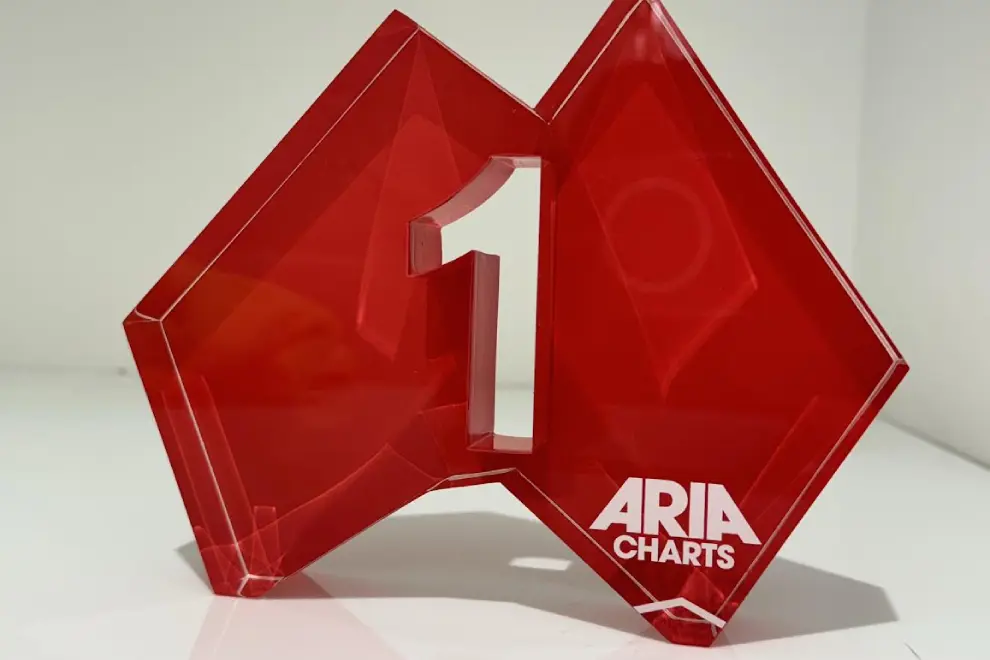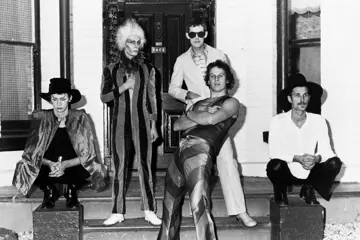The ARIA Charts are changing and as usual the comments sections are rife with opinions. Largely the changes have landed well, as they should have, as people understand the stagnancy that had set in to what should be reflecting a vibrant and dynamic industry.
The charts are scoffed at from haters as irrelevant or unrepresentative, but the truth is, while their gravitas and function may have shifted somewhat in the digital era, they are still the key yardstick we measure recorded music success from. Not just for short term commercial purposes, but for history. While the public might not be hanging on every minute of Rage or Take 40 Australia like they did in the 80s and 90s, the chart remains a historical record of what Australians are consuming this week. It says something about commerce, it gives artists a reason to celebrate their successes, but it also tells a story of who we are as a music-consuming population.
The ARIA Charts have now been around since 1988, taking over from the Kent Music Report which was founded in 1974. That’s fifty years of charts. So making a change like this is bound to have its critics. Removing all releases older than two years is a bold move. It will have a profound impact on the look and feel of the charts. Some will say it destroys the essence of what the chart should measure. Some will say it doesn’t go far enough. Most will just be glad to have more new music surfaced.
As a student of chart history, I think this is a great step towards bringing the chart back to having the utility it once did. In the heyday of the ARIA Chart, it provided a snapshot of what was happening in NEW music. It was a reading of the latest records and which ones were breaking through commercially at that time. It was never an arbiter of taste. History shows that some of Australia’s biggest songs were chart flops. Khe Sahn. Throw Your Arms Around Me. These Days. No Aphrodisiac. These are all songs that grew over time and became Aussie classics not because of the charts, but in spite of them. Great songs not charting is not a modern phenomenon. They prove that the charts don’t need to be everything to everyone, nor dictate ultimate success. They were never and will never be everything to everyone.
But over the last ten years, streaming has created a farcical situation where the charts are overrun by catalogue. Do the Goo Goo Dolls really need that place in the chart? Is anyone seriously discovering Fleetwood Mac for the first time because Dreams is in the top 20?
Critics of the changes will say that they should be there because the charts have always been a historical record and that by removing these songs it’s skewing history. These critics clearly weren’t around in the 90s.
The gatekeepers that kept the chart fresh used to be controlled record stores and record companies. By massaging that front wall at Brashs, you could keep the new releases you wanted to push front and centre. And the longevity of singles in the chart was completely controlled by the labels. Lamenting the lack of purity in the new rules would be forgetting that throughout the 90s, singles were routinely “deleted” from sale after three months, cutting their runs short and keep the charts moving.
Aqua’s Doctor Jones equaled the success of their first hit Barbie Girl. Why? Because they deleted Barbie Girl and stuck a remix on the next single. The public had a choice, get the remix on the b-side for $10 or shell out the $30 for the album. Australian music history shows that Killing Heidi’s Mascara was their bigger hit. Was that true, or was it that the record company deleted Weir and put it on the b-side of the second single so as to score them two platinum hits instead of one? Who wouldn’t buy a single with BOTH hits instead? In both cases it was about selling more albums and having more hits.
Until the streaming era, Guns n Roses’ November Rain was one of Australia’s longest running chart hits, clocking up 41 weeks on the chart. Why? Because it was one of the only singles the label let run and continued to press because it was so far past the release of the Use Your Illusion albums that the band had moved on to a new album (the horrendous Spaghetti Incident for those playing at home) and they figured they might as well keep making ten bucks on the singles as long as people were willing to do it. It wasn’t some reverential commitment to truth. So be careful before you put on those rose coloured glasses for the ‘good old days’.
We also had a world where there was PLENTY of listening happening to older songs. Catalogue listening isn’t a new phenomenon. In 2025, those listeners are all on the streaming platforms which are counting for the chart. In 1995, it was by tuning in to oldies radio or simply listening to the CDs, tapes or vinyl that were already in your collection. The listening was happening at least as much as it is now, but it wasn’t being counted. At least now we’re not having to pretend we’re excited by yet another Stevie Wonder best of repackage to sell at Christmas.
We also look at the charts as if they are a source of “truth” that has never changed. There have been incremental changes like this across the years, not least of which was when compilations were removed from the main chart in 1989. Without that change, the 90s would have seen 100% Hits and Hit Machine sparring it out for the top spot every week. It was a sensible change, just as this one is.
As unflattering as the system might have been, it worked to keep the charts fresh and relevant and as the world has changed over the last fifty years, ARIA has tinkered with the rules, not for nefarious reasons, but simply to create a chart that continued to do its job, balancing their role as an arbiter of history and a marketing tool. They are doing the same thing today, whether that’s creating the Australian Artists chart to at least give SOME moment to local artists while the broader and wicked local music issue is tackled, or making this bold change today to address new music visibility.
The changes announced today by ARIA will in some ways, bring back the spirit and purpose of what made the ARIA Charts relevant. Will it mean more Australian music in the charts? Not necessarily. But it will mean more NEW music in the charts. Is it anti-catalogue music? No. There’s a chart for that. History will still have a record of how popular Dreams and Iris are right now, just as we can still look back on the popularity of 100% Hits in the 90s should we wish to.
The argument that any changes are not worthwhile unless they help get Australian music into the chart are also counterproductive. The chart is there to measure, not to take sides. We should be setting broad, sensible rules, not making individual releases look rosier than they are, no matter how tempting. Closing the loophole on $2 digital album downloads that are never listened to is a fight for another day, but in the main the charts are a clear and accurate reading of what we’re doing as a society whether we like what we see or not.
These new changes mean that the new artists (Australian or otherwise) that would have been pushed out of the chart because the Foo Fighters and Eminem’s greatest hits were always in front of them, now gets seen. And that’s a fantastic thing, not only for marketing, but also for history. This week, had the new rules been in, independent Brisbane Indigenous artist Jungaji would have cracked the ARIA Top 50 albums. Even Dave Grohl would vote for that.
There are also those who argue it doesn’t go far enough. Sure, there’s a good argument that it makes little logical sense to count lean-back mood playlist listening on Spotify, but not count radio airplay impressions. There’s a good argument for a stream being the baseline number and sales converted to equivelant streams, given that’s the currency of the day. There’s the afforementioned loophole to close where inflated chart positions happen for artists selling cut price downloads bundled with ticket, t-shirts or drinks at a bar. These are all worthy fights, but they don’t take away from the fact that this is a major and meaningful change that shouldn’t be missed just because we could have done some more tinkering around the edges.
Sometimes slow change is good change and arguing small points at the risk of passing a big reform everyone can agree on risks ending up with no change at all. This will make a big impact for music discoverability. It might not be the nerdiest or even most elegant solution, but when the stakeholders around the table err on the side of conservatism, sometimes it’s for a good reason. The ARIA Charts do matter. Changes do need to be made very carefully and I have no doubt that the testing of the new rules will have been done rigorously. It doesn’t mean there can’t or won’t be more changes in the future, but in announcing this today, ARIA are showing the industry that they listened and acted. They are showing a commitment to not be scared of the continued evolution needed to maintain the relevance of structures and institutions like the charts and awards that visionary people founded for us fifty years ago.
Without doubt, this September we will have a better chart than we have now and for that, today ARIA deserves our credit.
















